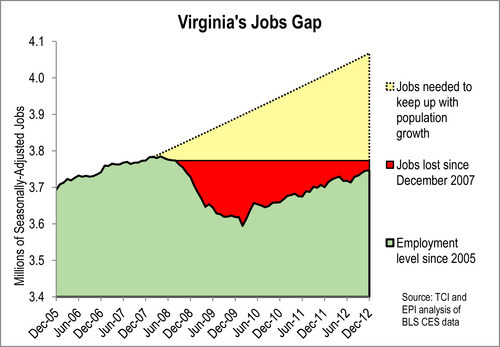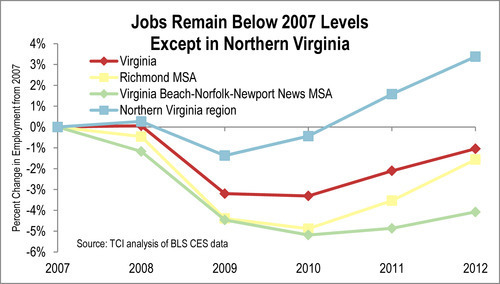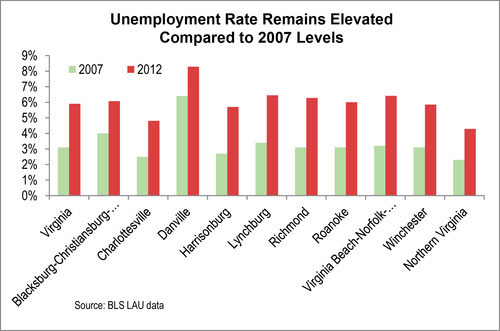March 18, 2013
The Hole We’re In: Employment Rebounded in 2012, but Most of Virginia is Still Lagging
First the good news: Virginia has made real progress in coming back from the job losses we suffered in the Great Recession, according to revised 2012 data released today by the Bureau of Labor Statistics (BLS). The state added 3,800 jobs per month on average in 2012. The unemployment rate ticked down to just under six percent for the year. This progress narrowed the gap between the jobs lost during the recession and the jobs we had before it started from 73,000 jobs in December 2011 to 31,700 jobs in December 2012.
Now for the bad news: Our working age population continued to grow in 2012. When you add the number of jobs we need for these new workers to the jobs we need to make up for the ones lost from the recession, our jobs gap grows to over 307,000 jobs. To close that gap in three years, we would need to add more than 12,000 jobs per month. Every month. For three years.
That’s the size of the hole we’re in.

According to BLS, the 2012 improvement was driven by an increase in private-sector employment, which grew 1.3 percent, and state government employment, which rose 0.9 percent. But, federal government employment, which cushioned the recession’s impact in Virginia in the early years of the economic downturn, fell for the second year in a row in 2012. With sequestration just beginning to hit, it’s anyone’s guess where this number will go in 2013.
Taking the longer view, however, 2012 employment was still 1.0 percent below 2007 levels. Private-sector employment was 2.2 percent below pre-recession levels. And of Virginia’s three large metropolitan regions, only Northern Virginia has recovered to pre-recession employment levels. The Hampton Roads region is particularly struggling—employment there remains 4.1 percent below 2007 levels.

Along with the increase in employment in Virginia came a welcome decline in the unemployment rate in 2012. But in almost every region of the state the unemployment rate remains almost double what it was before the recession.

